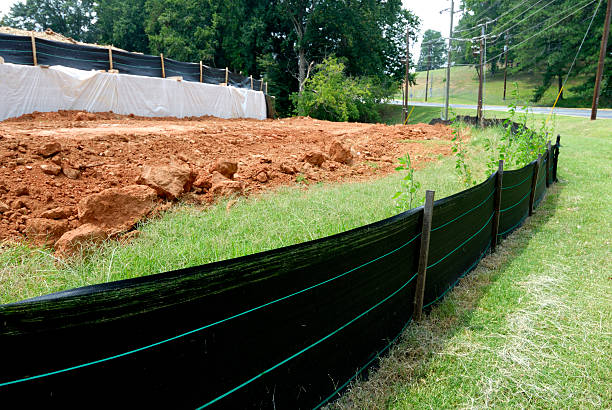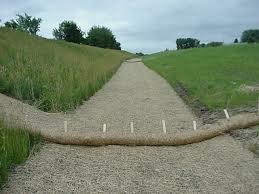Finest Practices for Disintegration Control in Construction Projects
Are you servicing a building and construction project and concerned concerning disintegration control? Look no further! In this post, we will certainly guide you through the finest techniques for preventing erosion on your site. You'll find 5 essential techniques, efficient debris and drainage monitoring strategies, essential considerations for incline stablizing, and pointers for protecting greenery and dirt. We'll additionally explore the relevance of implementing proper drainage systems. Prepare to tackle erosion head-on and guarantee the success of your building project.
5 Crucial Disintegration Control Methods

To efficiently manage disintegration on your construction site, you'll need to carry out crucial techniques such as slope stabilization and sediment control procedures. Slope stablizing is important in protecting against soil disintegration on high slopes. An additional reliable strategy is the use of disintegration control coverings or mats, which are positioned on the incline and assistance preserve soil fragments while enabling vegetation to expand.
Efficient Debris and Overflow Monitoring

You can effectively handle sediment and runoff in your building and construction project by executing proper disintegration control steps. Sediment and drainage management is crucial to avoid erosion and protect the surrounding atmosphere. One reliable measure is the setup of silt fencings along the perimeter of the construction website. These fencings aid to consist of debris and avoid it from getting in nearby water bodies. An additional essential technique is the implementation of erosion control blankets or floor coverings. These blankets supply a safety layer on bare dirt, reducing the impact of rainfall and avoiding disintegration. Additionally, the use of sediment basins or sediment traps can assist to catch sediment and avoid it from going into stormwater systems. Routine upkeep of these steps is vital to guarantee their performance throughout the building and construction project. This consists of checking and cleansing sediment basins and frequently changing silt fencings and disintegration control blankets as needed. By executing these erosion control measures, you can efficiently handle sediment and runoff in your construction task, decreasing the influence on the environment and abiding by governing demands.
Secret Factors To Consider for Slope Stablizing
You require to very carefully check out the incline's qualities, such as its drain, angle, and composition patterns. Look for signs of erosion, such as revealed roots, fractures, or hydroseeding down dirt.
One more alternative is to plant greenery on the incline, as the origins can assist secure the dirt and control erosion. Additionally, installing erosion control coverings or mats can provide instant security while vegetation becomes recognized.
It's important to regularly keep an eye on the maintained inclines to guarantee their effectiveness. Maintain an eye out for any type of indications of activity or disintegration, and take prompt activity if necessary. Regular upkeep, such as evaluating and fixing any kind of damaged steps, is likewise necessary to guarantee lasting stability.
Best Practices for Vegetation and Soil Security
One effective means to shield plants and soil on slopes is by consistently inspecting for indications of erosion and taking prompt action if necessary. Beginning by checking the slope for any kind of indications of erosion, such as revealed roots, bare soil spots, or sediment buildup at the base. Implement disintegration control measures such as mounting erosion control coverings, mulching, or even constructing maintaining walls if required.
Executing Correct Drain Systems
To properly execute correct drain systems, it's crucial to think about the slope gradient and dirt type. Understanding these aspects is essential when it comes to handling water circulation and preventing disintegration. The incline gradient plays a significant function in establishing exactly how water crosses the land. Steeper slopes can cause much faster water flow, boosting the danger of erosion and flooding. On the various other hand, gentler inclines allow water to stream extra slowly, decreasing disintegration possibility. By assessing the slope gradient, you can create a reliable drainage system that accommodates the natural water motion.
Sandy soils have a tendency to drain faster due to their crude appearance, while clay soils have a slower drainage price due to their small nature. In addition, considering the dirt features assists prevent waterlogging, which can lead to inadequate plant growth and damages to frameworks.
Conclusion
In final thought, when it comes to disintegration control in building and construction projects, you should comply with these finest techniques. Take into consideration slope stabilization methods to guarantee the stability of the website. By complying with these crucial practices, you can effectively control erosion and guarantee the success of your building job.
To successfully regulate disintegration on your building site, you'll need to execute vital methods such as slope stabilization and sediment control measures. Incline stablizing is essential in preventing soil disintegration on steep slopes. Another effective technique is the use of disintegration control coverings or floor coverings, which are put on the slope and help retain dirt fragments while enabling greenery to grow. Another choice is to grow vegetation on the slope, as the origins can assist anchor the soil and control disintegration. Implement erosion control steps such as installing disintegration control coverings, mulching, or even creating preserving wall surfaces if needed.